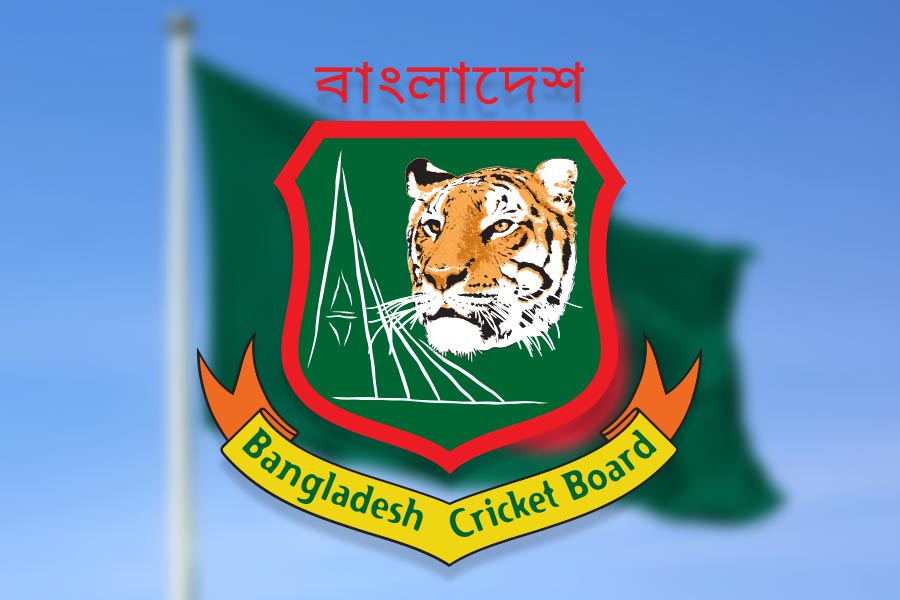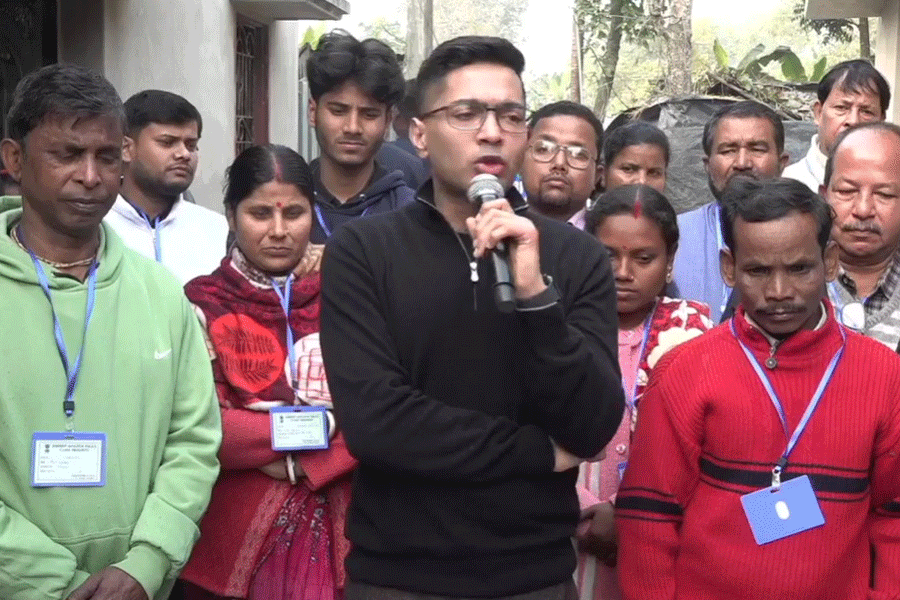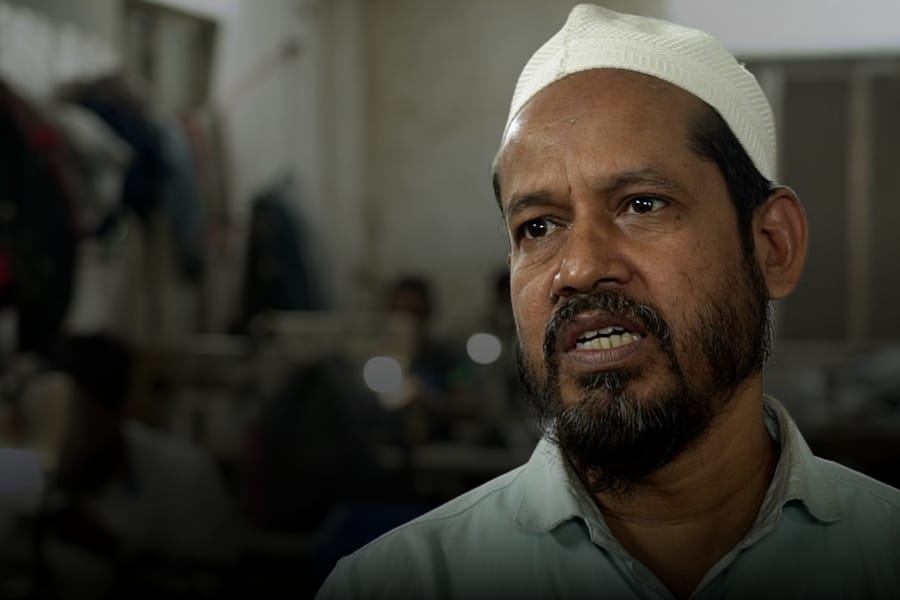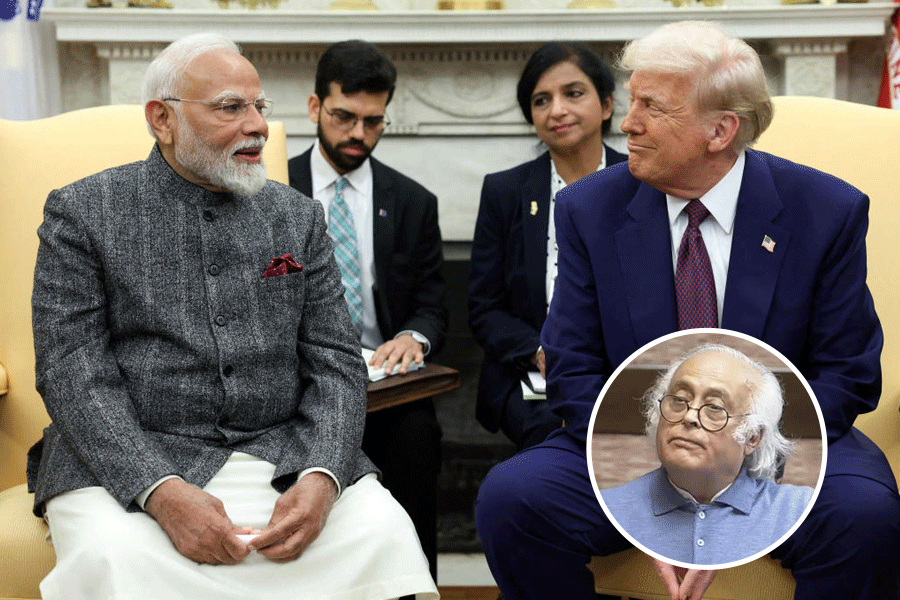 |
Nrityacharya Jatin Goswami believes he has received much more in terms of affection, appreciation and recognition that what he has contributed to society through his dance.
“The love, appreciation and recognition from well-wishers have given me immense satisfaction. But of course, there is this inner happiness that I have been able to contribute to society through the medium of dance,” says the recipient of Padma Shri (2008) and Sangeet Natak Akademi (2004).
The septuagenarian owes a lot to his xatra in Dergaon for inculcating in him the urge to learn Xattriya.
“I was born at Adhar Xatra in Dergaon, where dance was a part of religion. We danced in the xatra on different occasions. Traditionally, a Brahmin boy had to play the role of Krishna and dance in bhaonas. I was fortunate to get the opportunity and the tradition of dancing as Krishna developed in me the urge to learn the dance form,” the 79-year-old says.
“I started learning the dance when I was seven. With my father Dharinidhar Goswami as my first guru at the xatra, the experience of learning the art was very different. Thereafter, Gopiram Bayan and Babula Bayan took over as my gurus,” he says.
In 1953, Goswami set up Alok Shilpi Sangha, a centre for dance and music, in Dergaon. “It was about that time that I had the privilege of learning the nuances of performing arts from Kalaguru Bishnu Prasad Rabha. He motivated me to learn the folk dances of Assam as these have influenced the dance form of xatras,” says Goswami.
In 1957, Goswami went to Jaipur to learn Kathak from Guru Ganesh Hiralal after being inspired by a performance by Charu Bordoloi. “But I had to return to Assam two years later,” he adds.
During the sixties, Manipuri dance had become popular. “In 1961, I decided to learn Manipuri and went to Manipur to learn it from Guru Atomba Singh.”
In 1962, Goswami underwent an intensive training in Xattriya under Maniram Dutta Muktiyar and Roxeswar Saikia Barbayan of Kamalabari xatra.
“In the same year, along with Kalaguru and Barbayan, I founded the Pragjyoti Kala Parishad, a cultural organisation,” the dance exponent says.
“On Bishnu Rabha’s advice, we organised a camp at Tinsukia to rehearse for a bhaona, Rukmini Haran, which we were supposed to perform across Assam. Kalaguru himself had said that bhaonas were the essence of Xattriya dance. But he was arrested during the Chinese aggression of 1962 and we dropped the idea of staging the bhaona,” Goswami recalls.
Goswami joined the cultural affairs department of Assam in the late sixties but left the job in the seventies to propagate and promote Xattriya dance in the state.
Goswami was also associated with mobile theatre in Assam. He composed several dance dramas like Sundarpur, Tulasi Haran, Jia Yatra, Luitat Pare Pare and Chitralekha, which combined various dance forms. Some of the compositions like Nandi, Kansa Vadha and Putana Vadha were primarily based on Xattriya and Kathak.
“Bhramyaman (mobile) theatre was a good learning experience. It gave me the opportunity to learn how to choreograph and compose dance,” Goswami, who has choreographed about 117 dance dramas, says.
In 1992, he set up Sattriya Akademi, a centre for training and research in Xattriya, at Ananda Nagar near Noonmati in Guwahati. At present, the centre imparts training to around 100 students.
The Nrityacharya has also authored books like Sankari Nrityar Mati Akhara, Nrityar Prathamik Hasta Parichai and Nrityar Paribhashik Shabda aru Sangya.
Goswami, a recipient of Bharatiyam and Nritya Shiromoni awards, says the recognition of Xattriya as a classical dance form has provided artistes the opportunity to promote it in the right earnest.
“After Xattriya was accorded the status of a classical dance, we are able to showcase it as a major dance form of India both in the country and abroad. This has helped us create awareness about the dance form among the people outside the state. Besides a platform for upcoming artistes has been laid. But we still have a long way to go in developing and propagating Xattriya to take it to a different level,” Goswami adds.












